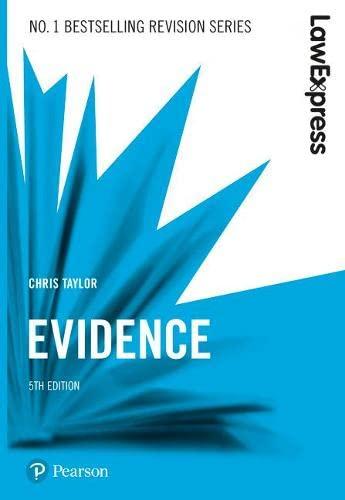Question
Delta Tools, Inc. markets a product that under some circumstances is capable of seriously injuring consumers. Does Delta have an ethical duty to remove this
Delta Tools, Inc. markets a product that under some circumstances is capable of seriously injuring consumers. Does Delta have an ethical duty to remove this product from the market, even if the injuries result only from misuse? Why or why not? (see Chapter 5, Part 5-4: Making Ethical Business Decisions)
5-4. Making Ethical Business Decisions
Even if officers, directors, and others in a company want to make ethical decisions, it is not always clear what is ethical in a given situation. Thinking beyond things that are easily measured, such as profits, can be challenging. Although profit projections are not always accurate, they are more objective than considering the personal impacts of decisions on employees, shareholders, customers, and the community. But this subjective component of decision making potentially has a great potential influence on a company's profits.
Companies once considered leaders in their industry, such as Enron and the worldwide accounting firm Arthur Andersen, were brought down by the unethical behavior of a few. A two-hundred-year-old British investment banking firm, Barings Bank, was destroyed by the actions of one employee and a few of his friends. Clearly, ensuring that all employees get on the ethical business decision-making "bandwagon" is crucial in today's fast-paced world.
Individuals entering the global corporate community, even in entry-level positions, must be prepared to make hard decisions. Sometimes, there is no "good" answer to the questions that arise. Therefore, it is important to have tools to help in the decision-making process and to create a framework for organizing those tools. Business decisions can be complex and may involve legal concerns, financial questions, possibly health and safety concerns, and ethical components.
5-4a. A Systematic Approach
Organizing the ethical concerns and issues and approaching them systematically can help a businessperson eliminate various alternatives and identify the strengths and weaknesses of the remaining alternatives. Ethics consultant Leonard H. Bucklin of Corporate-Ethics.US has devised a procedure that he calls Business Process Pragmatism. It involves five steps:
Step 1. Inquiry
First, the decision maker must understand the problem. This step involves identifying the parties involved (the stakeholders) and collecting the relevant facts. Once the ethical problem or problems are clarified, the decision maker lists any relevant legal and ethical principles that will guide the decision.
Step 2. Discussion
In this step, the decision maker lists possible actions. The ultimate goals for the decision are determined, and each option is evaluated using the laws and ethical principles listed in Step 1.
Step 3. Decision
In this step, those participating in the decision making work together to craft a consensus decision or consensus plan of action for the corporation.
Step 4. Justification
In this step, the decision maker articulates the reasons for the proposed action or series of actions. Generally, these reasons should come from the analysis done in Step 3. This step essentially results in documentation to be shared with stakeholders explaining why the proposal is an ethical solution to the problem.
Step 5. Evaluation
This final step occurs once the decision has been made and implemented. The solution should be analyzed to determine if it was effective. The results of this evaluation may be used in making future decisions.
Step by Step Solution
There are 3 Steps involved in it
Step: 1

Get Instant Access to Expert-Tailored Solutions
See step-by-step solutions with expert insights and AI powered tools for academic success
Step: 2

Step: 3

Ace Your Homework with AI
Get the answers you need in no time with our AI-driven, step-by-step assistance
Get Started


